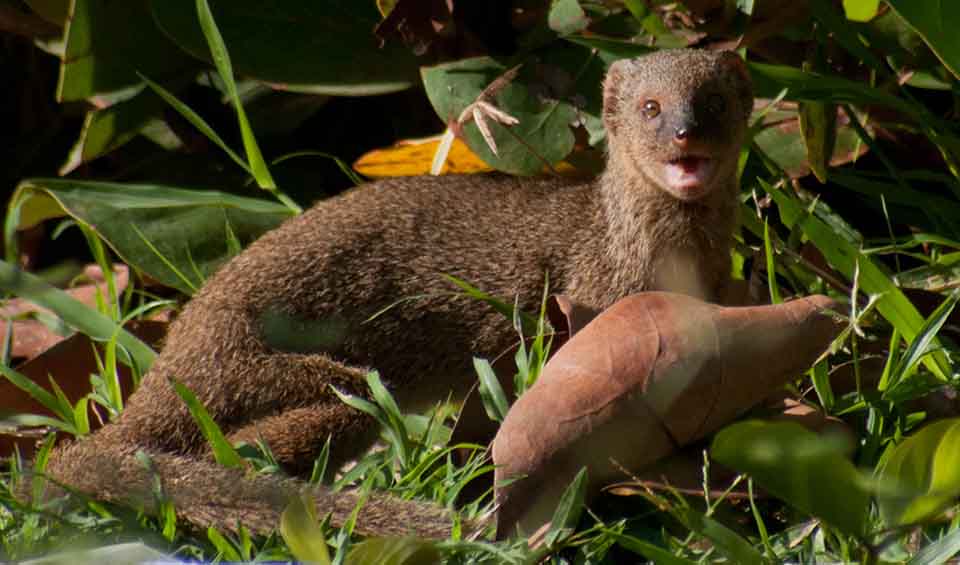A quick, curious, and highly adaptable mammal originally native to India, Pakistan, and parts of the Middle East, but now found in many tropical regions around the world due to human introduction. Known for its sleek body, quick reflexes, and bold nature, this mongoose has become both famous and infamous—celebrated for its snake-hunting skills and criticized for its impact on native wildlife in places where it was introduced.
This mongoose usually has a grizzled brown or gray, often flecked with golden or reddish tones, giving rise to the name “auropunctata,” which means “gold-spotted.” It has a pointed face, sharp teeth, and keen eyes, giving it a perpetually alert and energetic expression. Its slim build and flexible spine allow it to dart and twist through grasslands, forests, and even urban areas with ease.
The small Indian mongoose is a carnivore and opportunistic feeder, eating a wide variety of prey including insects, rodents, birds, reptiles, amphibians, and eggs. One of its most famous abilities is taking on venomous snakes, such as cobras. This mongoose isn’t immune to venom but has some resistance, and more importantly, it uses its speed and agility to avoid strikes and deliver a fatal bite to the snake’s head. Its hunting technique is so iconic that it’s often featured in folklore, most famously in Rudyard Kipling’s “Rikki-Tikki-Tavi.”
The small Indian mongoose is one of the most successful invasive mammals ever introduced by humans. In the 19th and 20th centuries, it was brought to islands in the Caribbean, Pacific, and Indian Oceans to control rats and snakes in sugarcane fields. Unfortunately, it soon became a serious ecological problem, preying on native birds, reptiles, and small mammals that had no natural defense against such an efficient predator.
Distribution
 Afghanistan
Afghanistan Bangladesh
Bangladesh Bhutan
Bhutan Bosnia And Herz.
Bosnia And Herz. British Virgin Is.
British Virgin Is. China
China Croatia
Croatia Cuba
Cuba Dominican Republic
Dominican Republic Fiji
Fiji French Guiana
French Guiana Guyana
Guyana India
India Iran
Iran Iraq
Iraq Jamaica
Jamaica Japan
Japan Jordan
Jordan Mauritius
Mauritius Myanmar
Myanmar Nepal
Nepal Oman
Oman Pakistan
Pakistan Puerto Rico
Puerto Rico Saudi Arabia
Saudi Arabia Suriname
Suriname Tanzania
Tanzania Trinidad & Tobago
Trinidad & Tobago US Virgin Islands
US Virgin Islands United States
United StatesAnything we've missed?
Help us improve this page by suggesting edits. Glory never dies!
Suggest an editGet to know me
Terrestrial / Aquatic
Altricial / Precocial
Polygamous / Monogamous
Dimorphic (size) / Monomorphic
Active: Diurnal / Nocturnal
Social behavior: Solitary / Pack / Herd
Diet: Carnivore / Herbivore / Omnivore / Piscivorous / Insectivore
Migratory: Yes / No
Domesticated: Yes / No
Dangerous: Yes / No




